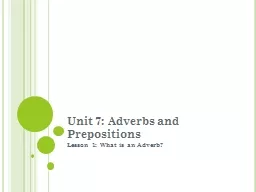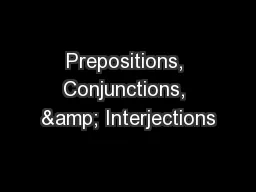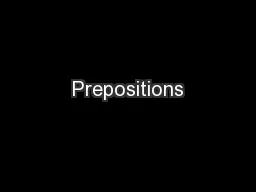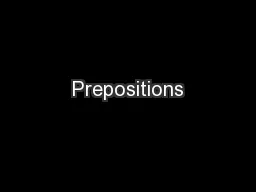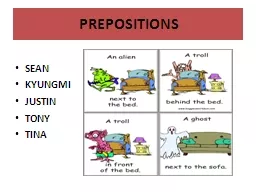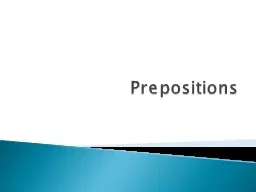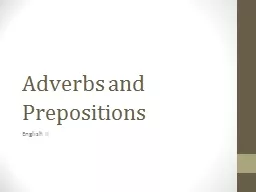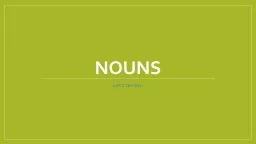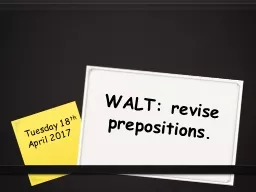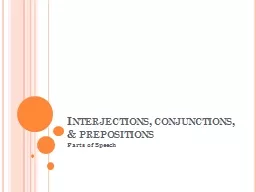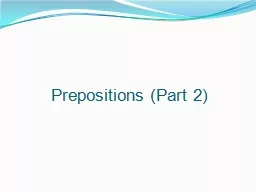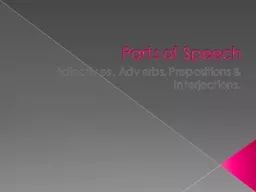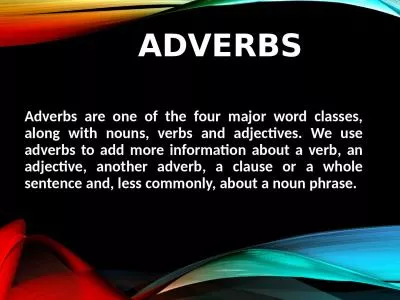PPT-Unit 7: Adverbs and Prepositions
Author : danika-pritchard | Published Date : 2017-12-19
Lesson 1 What is an Adverb Adverbs An adverb is a word that describes a verb Tell how when or where the action happens Many end in ly Common Adverbs How fast
Presentation Embed Code
Download Presentation
Download Presentation The PPT/PDF document "Unit 7: Adverbs and Prepositions" is the property of its rightful owner. Permission is granted to download and print the materials on this website for personal, non-commercial use only, and to display it on your personal computer provided you do not modify the materials and that you retain all copyright notices contained in the materials. By downloading content from our website, you accept the terms of this agreement.
Unit 7: Adverbs and Prepositions: Transcript
Download Rules Of Document
"Unit 7: Adverbs and Prepositions"The content belongs to its owner. You may download and print it for personal use, without modification, and keep all copyright notices. By downloading, you agree to these terms.
Related Documents

